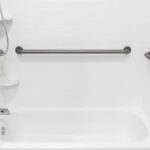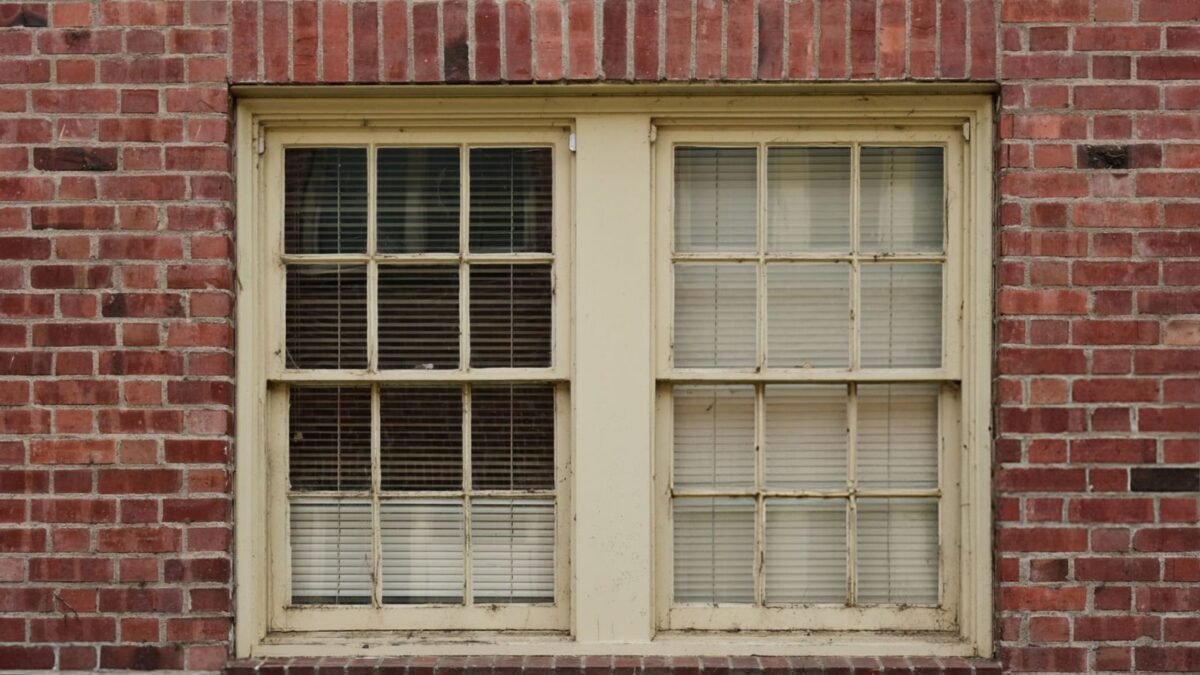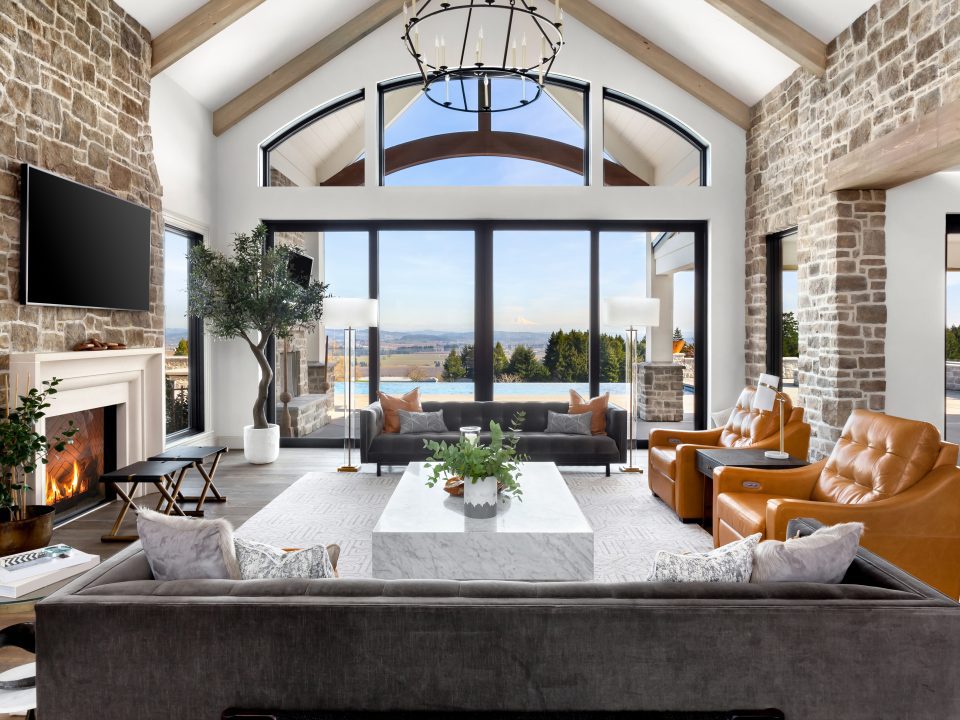
Holiday Hosting 101: Making Your Bathroom Senior-Friendly for Visiting Relatives
September 22, 2025Many older homes lose a significant amount of heat through their old home windows during the winter. Even if the heating system is efficient, old windows with single panes or poor seals let warm air escape and cold air enter. This heat loss not only makes the home less comfortable but also affects winter budgeting by increasing energy bills and wasting heating power outside.
Replacing windows can be costly, but there are simple ways to reduce heating energy waste. Using plastic film, adding weather stripping, or installing insulated shades can help slow down heat loss and keep more warmth inside. Understanding how old home windows affect energy use helps homeowners make better choices for holiday spending and save money this winter.
Knowing the signs of window inefficiency and the impact on heating costs is the key to stopping heat from slipping outdoors. By focusing on energy-efficient solutions, families can gain better control over winter expenses and even grow an emergency fund for the season.
Stop Heating the Outdoors: How Your Old Home Windows are Wasting Money This Winter
Why Old Home Windows Waste Energy
Old windows lose heat in several key ways. Problems like thin glass, poor insulation, and gaps let warm air escape quickly, making heating systems work harder and pushing winter spending upward.
Common Heat Loss Problems
Older windows often have single-pane glass, which does little to block heat transfer. Heat moves easily through the glass, making rooms colder in winter.
Seals around the window frames may crack or wear out over time. These broken seals let warm air leak outside and cold air come in. Condensation between panes can also create insulation problems that hurt energy efficiency.
Window Material and Insulation Issues
Many old windows use wood or metal frames that don’t insulate well. Wood can shrink or warp, creating gaps. Metal frames transfer heat quickly due to conduction.
Older frames often lack thermal breaks, barriers inside the frame that slow heat loss. Without these, heat can pass freely through the window.
Insulation materials from older windows may also degrade, lowering their ability to keep indoor temperatures steady and boosting energy bills.
Drafts and Air Leakage Explained
Small gaps or cracks around window edges act as drafts. These let cold air slip inside and warm air flow out.
Air leakage adds up quickly, especially in windy conditions. It can make rooms feel chillier even with the heating on.
Old weatherstripping wears down and no longer seals well. Without a tight seal, heating systems must run longer to maintain warmth.
Checking and repairing leaks can save energy, but a full replacement often gives a better long-term money-saving result.
Financial Impact of Inefficient Windows
Old and inefficient windows can cause significant financial strain during winter. They increase heating costs, create other hidden expenses beyond energy bills, and holding off on upgrades means missing out on real savings.
Higher Heating Bills
Inefficient windows can cause a home to lose up to 30% of its heat. This means the heating system must work harder to keep the house warm, driving up expenses and stressing spending limits. For example, some homeowners might see an extra $60 or more each month added to their heating costs just because of heat lost through poor-quality windows.
Windows that are drafty or have broken seals let heat escape easily. The more heat lost, the more money spent on energy. This cost can add up quickly over a winter season, making old windows a major financial burden.
Hidden Costs Beyond Energy Use
Old windows don’t just raise bills. They also make heating systems wear out faster because they run more often to handle the heat loss. This can cause costly repairs or early replacement.
Additionally, inefficient windows let in moisture that can cause mold growth and damage to interior walls and flooring. These issues lower home value and may lead to expensive fixes. Faded furniture and curtains from sun damage through single-pane or poorly coated glass are another hidden cost.
Annual Savings from Window Upgrades
Replacing old windows with energy-efficient models can reduce heating costs by 7% to 15% each year. This means a household spending $1,200 on heating might save $84 to $180 annually.
Energy Star-qualified windows also reduce the workload on HVAC systems, lowering maintenance costs. Over time, saving on utility bills and upkeep can add up to hundreds of dollars. Investing in good windows increases home comfort and resale value, offering multiple financial benefits.
Effective Solutions to Stop Heating the Outdoors
Old windows can let warm air escape and cold air enter, driving up heating bills. There are several ways to fix this problem, from simple sealing to full window replacement. Each option improves energy efficiency and helps keep homes warmer in winter.
Weatherstripping and Sealing
Weatherstripping is a low-cost, effective way to reduce drafts around old windows. It involves applying materials like foam tape, rubber, or felt strips to the window frame to block gaps where air leaks. This can cut down heat loss significantly.
Sealing leaks with caulk around window edges is another simple step. It fills cracks that let cold air in. Together, weatherstripping and sealing can stop most drafts without major repairs.
For best results, check windows for worn or missing strips and damaged caulk. Replace or add where needed each fall before heating season starts.
Window Insulation Options
Window insulation film is a popular, affordable solution for drafty old home windows. Applied with double-sided tape and then heated to create a tight seal, it forms a barrier against cold air. Installing storm windows, an extra pane outside the original window, gives added insulation and takes pressure off heating systems during seasonal expense crunches.
Thermal curtains and cellular blinds are further saving tip favorites, trapping air and blocking cold from glass surfaces. Together, these energy-saving upgrades can cut heat loss by up to 30%, helping families maintain their winter budgeting goals and stay comfortable.
Insulation film, storm windows, and thermal curtains are top saving tips for homeowners looking to boost energy efficiency affordably. Combined, these upgrades reduce heat loss and make rooms more comfortable.
Replacing Old Windows with Energy-Efficient Models
For severe heat loss, replacing windows may be necessary. Modern energy-efficient windows use double or triple panes with gas fills like argon between glass layers. This lowers heat transfer.
Frames made from vinyl, fiberglass, or wood with proper sealing also improve insulation. Low-emissivity (Low-E) coatings reflect heat inside while still letting in sunlight.
Though costlier upfront, new windows can save money on heating bills in the long run and increase home comfort. Look for Energy Star-certified products for the best performance.
Professional Assessment and Installation Tips
Hiring a professional to assess window issues can identify hidden leaks and recommend the best solutions. They can measure air infiltration and suggest whether sealing or replacement is best.
Proper installation is key. Even high-quality windows lose value if poorly installed or sealed. Professionals ensure tight fits and use appropriate weatherproofing techniques.
When installing insulation film or storm windows, an expert can help select materials that fit the home’s specific needs and climate. This reduces risks of damage and maximizes energy savings.
Long-Term Benefits of Upgrading Old Windows
Upgrading old windows offers clear advantages that improve daily living, protect the home’s value, and support environmental goals. These benefits go beyond simple repairs, creating lasting improvements for homeowners.
Improved Comfort and Indoor Air Quality
New windows reduce drafts that make rooms cold in winter and hot in summer. By sealing gaps, they keep indoor temperatures steady. This means less need for heating and cooling, which lowers energy bills.
Better seals also stop moisture and outdoor pollutants from entering the home. This helps improve indoor air quality by reducing allergens and dust. Homes with upgraded windows often feel more stable and comfortable all year round.
Increased Home Value
Modern windows enhance a home’s appearance, adding curb appeal that attracts buyers. They also signal to buyers that the home is energy-efficient and well-maintained, which can justify a higher asking price.
Homes with new windows often sell faster. The long-lasting quality of these windows reduces future repair costs, making the property more appealing. This upgrade is seen as a smart investment by potential homeowners.
Reduced Environmental Impact
Old windows lose a lot of heat, forcing heating and cooling systems to work harder. New windows improve insulation, cutting heat loss by up to 30%. This means less energy use and fewer greenhouse gas emissions.
Choosing energy-efficient windows helps reduce the carbon footprint of the home. It supports broader sustainability goals while saving money on utility bills. Upgrading windows is a practical step toward a greener home.
North Country Windows & Baths in Omaha, Lincoln, NE, and the Surrounding Areas
At North Country Windows & Baths, our Windows are backed by a Lifetime Warranty, giving our customers peace of mind. Each window is custom-made to fit your home with state-of-the-art engineering by design, and energy efficiency enhanced by style. Our windows are made to last for years of maintenance-free beauty.
Whether you want a tub shower combo surrounded by subway tile or a low threshold shower with granite-like walls, you can customize your BathWraps space and even add accessories like soap dishes, caddies, seating, grab bars, and more. Contact us today.
More information about our Bathroom Remodels process: Click Here!




